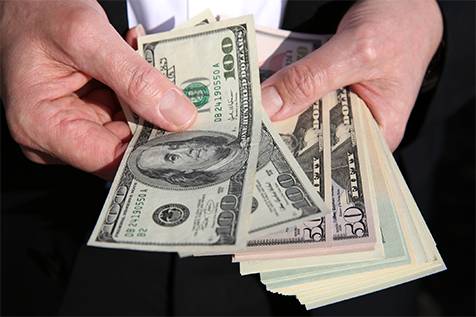The US dollar strengthened on Tuesday against both the safe-haven Japanese yen and the growth-linked Australian dollar, as investors turned more cautious toward risk and shifted their focus to upcoming economic data following the end of the US government shutdown.
In early Asian trading, the yen hit its weakest level since February, while the Australian dollar held on to part of its recent gains against the greenback.
In recent days, risk-sensitive currencies such as the Australian dollar and the British pound have recorded notable gains, while safe-haven currencies like the yen have weakened, as optimism over the imminent end of the US government shutdown boosted appetite for risk assets.
Markets Price In the End of the US Government Shutdown
Investors expect the US government shutdown to end in the coming days after the Senate on Monday approved a deal to restore funding to federal agencies and halt President Donald Trump’s campaign to shrink the government workforce.
Isabel Matheus e Lago, chief economist at BNP Paribas, said: “Our forecasts suggest the US economy remains resilient and inflation is moderating at a steady pace, which should allow the Federal Reserve to cut interest rates by 25 basis points in December and then proceed more cautiously through 2026.”
She added: “Our reading of the economic landscape shows that we’re still in a phase of low hiring and layoffs, with no clear signs of stress… but let’s see what the upcoming data reveals.”
The agreement to end the shutdown now moves to the House of Representatives, where Speaker Mike Johnson said he hopes to pass it as soon as possible — possibly on Wednesday — before sending it to President Trump for his signature.
Francesco Pesole, currency strategist at ING, said: “There won’t be a clear market direction in the coming days. The likelihood of the government reopening reduces the growth impact of the shutdown, but the resumption of US data releases carries non-trivial downside risks for the dollar.”
He added: “We believe markets are underestimating the negative risks facing the US labor market and short-term rates — and thus the dollar — through year-end.” The euro was little changed at $1.1555.
Thierry Wizman, global FX and rates strategist at Macquarie Group, said: “The bottom line is that ending the shutdown will help avoid a sharper slowdown in GDP growth and corporate earnings.”
Pound Falls, Yen Under Pressure
The British pound fell 0.40% to $1.3126 after data showed a significant slowdown in the UK labor market during the third quarter.
The dollar rose 0.10% to 154.28 yen after touching 154.495 — its highest level since February.
The yen came under renewed pressure after new Japanese Prime Minister Sanae Takaichi urged policymakers to delay further interest-rate hikes, while US officials have grown more cautious about additional rate cuts.
Meanwhile, the US dollar slipped 0.25% to $0.6520 against the Australian dollar, ending a two-day winning streak.
The Swiss franc, meanwhile, was on track for a fourth consecutive daily gain after President Trump said the US was working with Switzerland on an agreement to reduce the 39% tariff. The franc rose 0.15% to 0.8035.


